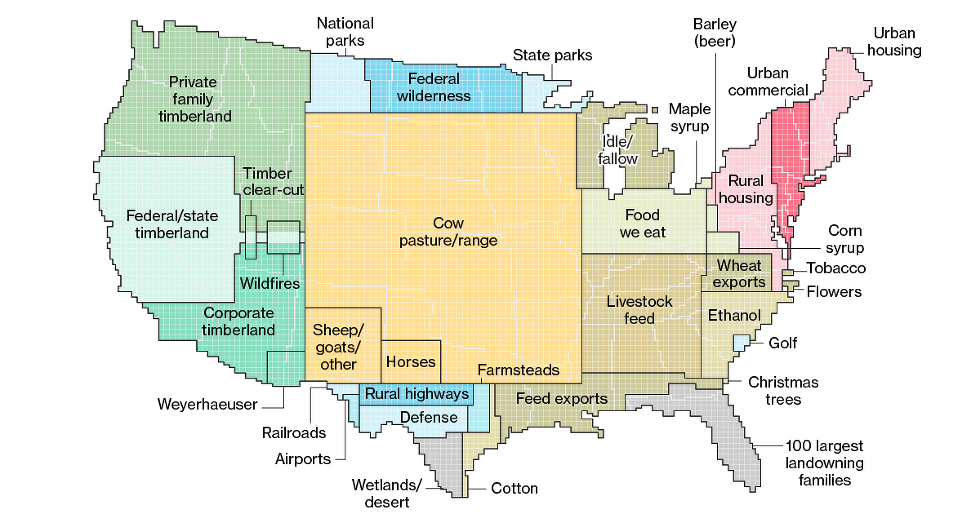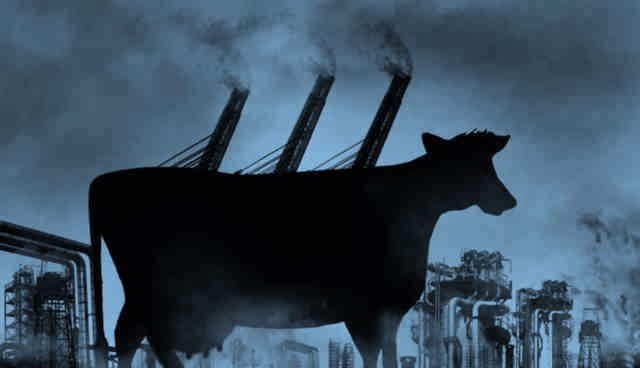You probably saw the alarming headlines that attended the recent release of the UN’s report on climate change. “Planet has only until 2030 to stem catastrophic climate change,” read one. Another warned, “We have 12 years to limit climate change catastrophe!” This is a topic we address in some detail in Moonshots—but not from the angle you might expect.
Just as we’re witnessing in space exploration, entrepreneurs are also taking the lead in bringing real solutions to the planet’s climate challenges. So let’s cut to the chase and answer the real question at the heart of global warming: “Where’s the beef?”
As we pointed out in the book, a shocking amount of environmental damage is done by cattle. It turns out that these animals are responsible for a substantial share of greenhouse gas emissions—more than the emissions from all of the world’s cars, trains, and planes combined. What’s more, the burden that the livestock industry places on the planet has ripple effects throughout our global ecosystem. For example, it seems we’re always facing one crisis or another over the availability of fresh water. Well, just as livestock comprises the biggest problems for the climate, it’s also the dominant factor modulating the scarcity of freshwater and crop production for humans. It’s absolutely true that the root of global warming is the demand for beef. And it’s growing. It is no exaggeration to say that the beef industry represents the single-most unsustainable and environmentally damaging industry that civilization has ever seen.
Let’s take a look at how this works out in the United States. The map below illustrates land use in an illuminating way. Are you surprised to see that livestock consumes more than one-third of our total landmass—more than any other land use category—by far? By contrast, urban areas account for just 3.6% of the Lower 48’s total. Cattle, cattle everywhere!

But let’s get back to the UN report. What does it have to say about all this? Well, it’s pretty affirming. Here are just a few of the highlights:
- Livestock are responsible for more GHG [greenhouse gas emissions] emissions than all other food sources.
- Emissions are caused by feed production, enteric fermentation, animal waste, land-use change and livestock transport and processing. Some estimates indicate that livestock supply chains could account for 14.5% of global anthropogenic greenhouse gas emissions. Cattle are responsible for about two-thirds of that total, largely due to methane emissions resulting from rumen fermentation.
- Despite ongoing gains in livestock productivity and volumes, the increase of animal products in global diets is restricting overall agricultural efficiency gains because of inefficiencies in the conversion of agricultural primary production (e.g., crops) in the feed-animal products pathway, offsetting the benefits of improvements in livestock production systems.
- There is increasing agreement that overall emissions from food systems could be reduced by targeting the demand for meat and other livestock products, particularly where consumption is higher than suggested by human health guidelines.
- The integration of trees and shrubs into crop and livestock systems, when properly managed, can potentially restrict soil erosion, facilitate water infiltration, improve soil physical properties, and buffer against extreme events.
- A range of measures could radically reduce agricultural and land-use emissions. This includes plant-based proteins and cultured meat with the potential to substitute for livestock products at much lower GHG footprints.
That last bullet is the one that hits the bullseye, so to speak. And it represents a MASSIVE entrepreneurial opportunity. It’s a reference to so-called “clean meat,” which is, for all practical purposes, “real” meat, but produced via what I call bio-agriculture—the production of agricultural products from cell cultures—in a lab instead of the slaughterhouse. It’s not genetically modified food, but rather “tissue-engineered” food. Products harvested from cell cultures are EXACTLY THE SAME as those harvested from an animal; they’re just grown differently. Stem cells taken from the animal are grown in bioreactors—systems that support a biologically active environment—that will eventually scale in size to increase yields and decrease costs.
Learn more about this in the book. It’s a topic we’ll also be following closely here, as this is one moonshot that can put a major dent in climate concerns while simultaneously restoring fresh water supplies and freeing up billions of acres of productive land. And oh, it could also feed the world.


